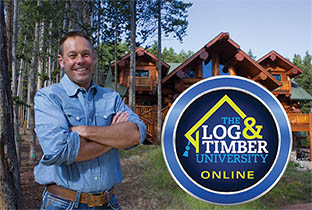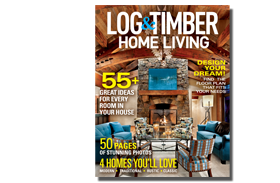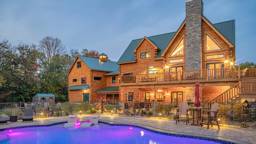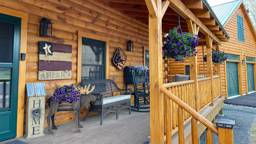As consumers, we are besieged by marketing buzzwords dozens, if not hundreds, of times a day. The concept of a “hybrid” is one of them. Over the past 20 years, the term has been applied to everything from tomatoes to transportation.
Even within a singular industry, such as residential construction, there are many interpretations as to what the word “hybrid” means; and often the differences directly relate to the area in which you live. Somebody who lives in a subtropical climate like Florida will have a different vision of a hybrid home than a person who resides in snowy Vermont. For some, a hybrid home centers on energy efficient systems; for others, alternative building materials and atypical design are at its heart. Neither of these interpretations is wrong.
Who is a Hybrid Home Candidate?
Log homes have many passionate enthusiasts, especially among the Baby Boomer generation who grew up with movies and TV shows about taming the Wild West or living off the land in the wide-open prairie. For these folks, the nostalgia and authenticity of a “real log cabin” is paramount. The idea of applying half-log siding to a stick-framed house or having drywall in the interior is not an option — and that’s a perfectly valid approach.
Hard-core timber home fans are much the same. They long for the rustic elegance of that exposed-timber look, with soaring ceilings, majestic truss systems and the exquisite detail that timber framing brings to the table. Though they may opt for a variety of external finishes, like stone, brick or siding, the craftsmanship of a true timber frame is second to none.
How Does a Log & Timber Hybrid Come Together?
There are a number of ways a log-and-timber hybrid is born. One of the most common employs a timber frame at its core, wrapped in structural insulated panels (SIPs) and clad in half logs on the exterior. This approach gives you log cabin curb appeal with a wide range of design diversity inside. It also affords an opportunity to use other materials, like stone or stucco, in creative ways.
For a distinctive look, it is possible to design and build a house where one portion of the home is full log and another is timber framed. However, when connecting building systems, there are some challenges to overcome — particularly settlement — which can be one of the biggest hurdles when fusing several building disciplines into one unit.
All homes settle over time. But in an exposed-wood home, different species react to this natural process in different ways. Plus, the fact that full-log walls are a distributed load system (the weight is dispersed across the entire wall) and timber framing is a point-load system (the weight of the house is transferred to the posts and the walls are not load bearing) will cause the house to settle at varying rates. You can solve this riddle by coupling the structures with a connector, like a short corridor, a gallery or a breezeway, which will allow each of the two systems to settle independently while remaining attached.
If you’re looking for something a little less involved, you can outfit a full-log home with a decorative timber rafter assembly, including highly ornamental hammerbeam or king-post trusses. There are some nuances that a builder will have to address, like ensuring that the trusses are pre-assembled off-site and then putin place with a crane, but it’s not hard to accomplish.
I’ve even built an ICF house, clad the exterior in logs and put non-structural timber framing on the inside. From the outside, you’d swear it was a log home; you’d never be able to tell it’s concrete at its core.
At the end of the day, the level of design and engineering, the wood species used, how dry the logs and timbers are, the way the components are tied together to prevent pitching and air infiltration and a host of other project-specific factors are challenges a hybrid log and timber home builder will face. But all of these potential hiccups can be resolved — if your builder is in the loop every step of the way.
Getting the Hybrid Home You Want
Today’s buyers may appreciate the back-to-nature environment log and timber homes impart, but their buying decisions are based on more than looks alone. They’re rooted in design functionality, energy performance, speed of construction, ease of maintenance and, of course, price.
Because of the craftsmanship that goes into a full log or timber home, they cost more per square foot than an average stick framed home with the same level of finishing detail. That’s just a fact. But by mixing materials, a hybrid can open the door to ownership in a more affordable way.
If the hybrid path is one you want to pursue, give your builder as much information as possible. Likewise, he or she also should drill down to the core of your wants and needs, and then steer you in the right direction. For example: Which rooms are the most important to you? Where do you really want to see the logs or timbers and where can you pull back with just some ornamental wood components? Where do you want to interject color or texture, and how would you like to accomplish that? The final plan should reflect the answers to these questions.
Dan Mitchell is a builder and a Log & Timber Home University professor. He owns Eagle CDI, a construction firm based near Knoxville, Tennessee.











